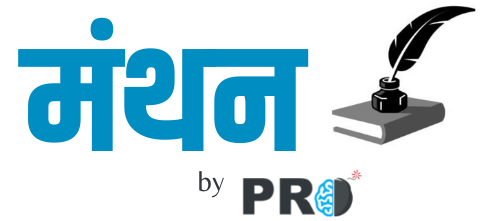-Shweta Shah
The bustling metropolis of Bengaluru, often hailed as the ‘Silicon Valley of India,’ is facing a recurring crisis that threatens the very foundation of the city's existence – a severe water shortage. Bengaluru, celebrated as a beacon of economic growth and innovation, faces a critical question: has this growth been beneficial or detrimental to its 9.6 million residents? This crisis is a stark reminder that rapid urbanization and economic development can come at a heavy cost. But Bengaluru isn't alone. Many major Indian cities are grappling with similar water woes, highlighting critical gaps in urban water management. From Mumbai to Delhi, Chennai to Kolkata, the story is the same – burgeoning populations, strained infrastructure, and dwindling water resources.
The Current Situation in Bengaluru:

Steps Taken by the Administration:
In Bengaluru, the urban governance bodies have implemented measures to address the water crisis, such as water rationing, conservation campaigns, and infrastructure investments. The BWSSB (Bengaluru Water Supply and Sewerage Board) has banned non-essential uses of potable water and initiated projects to augment supply. Immediate digging of 58 borewells in various regions of the city has been ordered. However, these measures often fall short of addressing the root causes of the crisis and may provide only temporary relief.
What cities can learn -
Bengaluru's
woes serve as a cautionary tale for
other growing cities. Across India, cities are witnessing a surge in
population as people migrate in search of better opportunities. This influx
strains existing water resources. Unchecked urban sprawl paves over natural
landscapes, hindering rainwater recharge and exacerbating flooding during
monsoons. Lakes and ponds, once natural
reservoirs, are encroached upon or polluted, further diminishing water storage
capacity. Proactive water management plans, sustainable practices like
rainwater harvesting, treatment of sewage water, lake restoration, and
responsible urban development are crucial lessons to learn.
Urban Governance - Falling Short
Urban governance bodies often struggle to keep pace with the growing demand for water. Over-reliance on distant rivers or unsustainable groundwater extraction are short-sighted solutions. Inefficient water distribution systems lead to leakages and wastage. Furthermore, a lack of public awareness and pricing mechanisms that don't discourage overuse compound the problem. The civic administrations often prioritize economic benefits over the maintenance and conservation of precious natural resources, putting the futures of all its residents at risk.
Policy Solutions for a Sustainable Future -
Here
are some key policy solutions that can help Indian cities navigate this water
crisis:
●
Long-Term
Vision: Cities need a long-term water management plan that factors in
population growth, rapid economic development and climate change.
●
Rainwater
Harvesting: Mandatory rainwater harvesting in residential and commercial
buildings can significantly reduce dependence on external sources.
●
Wastewater
Treatment and Reuse: Treated wastewater can be used for irrigation and
non-potable purposes, reducing freshwater demand.
●
Lake and River
Restoration: Desilting and rejuvenation of lakes and rivers can replenish
natural water bodies. Also, urgent de-encroachment of these water bodies should
be taken up.
●
Public
Awareness Campaigns: Educating citizens about water conservation and including
them in the water management campaigns and projects is crucial.
●
Leakage
Detection and Repair: Upgrading water infrastructure to minimize leaks and
ensure efficient distribution is essential.
●
Tariff Reforms:
Water pricing structures that incentivize conservation and penalize overuse can
encourage responsible water use.
● Explore Alternative Water Sources: Urban governance bodies must diversify water sources to alleviate pressure on degrading rivers. Treated wastewater offers a sustainable solution for non-drinking purposes like irrigation and industrial use. Simultaneously, curbing groundwater extraction and implementing recharge techniques can replenish aquifers, safeguarding this critical resource. Moreover, rejuvenating polluted lakes and ponds not only expands water storage but also enhances ecological health.
As Bengaluru and other major cities grapple with their water crises, there are valuable lessons to be learned. Urban governance bodies must recognize the interconnected nature of water issues and take proactive measures to address them. By prioritizing sustainability, equity, and resilience, cities can navigate their water challenges and build a more sustainable future for all residents. The journey ahead will be challenging, but with collective action, citizen participation and innovative solutions, cities can turn the tide on their water crises and emerge stronger than ever before. By taking action now, cities can avoid a similar fate and ensure a secure water future for all.

(Shweta is an Assistant Professor at MMM’s Shankarrao Chavan Law College;
and a research associate at Glass Half Full Media, Australia)
References
-
https://youtu.be/YaYS154cvVk?si=DY0xcMwlh96tm_BQ
https://bwssb.karnataka.gov.in/storage/pdf-files/documents/Vision%20Document%202050%20%20new.pdf


